Metadeinopsis
James S. Ashe (1947-2005) and Stylianos Chatzimanolis


This tree diagram shows the relationships between several groups of organisms.
The root of the current tree connects the organisms featured in this tree to their containing group and the rest of the Tree of Life. The basal branching point in the tree represents the ancestor of the other groups in the tree. This ancestor diversified over time into several descendent subgroups, which are represented as internal nodes and terminal taxa to the right.

You can click on the root to travel down the Tree of Life all the way to the root of all Life, and you can click on the names of descendent subgroups to travel up the Tree of Life all the way to individual species.
For more information on ToL tree formatting, please see Interpreting the Tree or Classification. To learn more about phylogenetic trees, please visit our Phylogenetic Biology pages.
close boxIntroduction
The five known species of Metadeinopsis are medium-sized (3.5-5.3 millimeters in length), teardrop-shaped, brown to dark brown aleocharines. They are probably associated with leaf litter or detritus in swampy habitats, though collecting information for these rare beetles is very limited. The species of Metadeinopsis are found only in the Neotropical region (currently known from Paraguay, Brazil, Columbia, Ecuador, French Guiana and Peru).
Characteristics
Adults of Metadeinopsis can be distinguished from those of other Deinopsini by the combination of: 5-5-5 tarsal formula; maxillary palpus 3-segmented; abdominal tergite X with broadly rounded apex; and, antennal segment XI with apical papilla (from Klimaszewski 1979). Klimaszewski (1979) provided descriptions, distributional information, illustrations of structural features, and a key for identification of the known species. Additional distributional information is found in Klimaszewski (1982).
Discussion of Phylogenetic Relationships
Klimaszewski (1979) provided the only available phylogeny for three of the species of Metadeinopsis. Because adults of Metadeinopsis are externally extremely similar, the phylogeny is based mostly on characteristics of the terminalia and genitalia and should be considered very provisional. The phylogenetic positions of M. balli and M. ferox have not been examined.
References
Ashe, J. S. 2002. Allodinopsis, new genus of Deinopsine Aleocharinae from Cetral America, and a new species of Metadeinopsis Klimaszewski 1979 (Staphylinidae: Aleocharinae: Deinopsini). J. Kans. Entomol. Soc. 75(2): 61-72.
Klimaszewski, J. 1979. A revision of the Gymnusini and Deinopsini of the World. Canada Agriculture monograph No. 25. 169 pp.
Klimaszewski, J. 1982. A revision of the Gymnusini and Deinopsini of the world (Coleoptera: Staphylinidae). Supplement 2. Canadian Entomologist 114: 317-335.
Klimaszewski, J. and F. Genier. 1985. A revision of the Gymnusini and Deinopsini of the World. Sup 3. Colepts. Bull. 39(1): 60-66.
Title Illustrations

| Scientific Name | Metadeinopsis brunnea |
|---|---|
| Location | Paraguay |
| Size | length 3.6 mm |
| Copyright |
© 1997 James S. Ashe (1947-2005)

|
About This Page
Development of this page made possible by National Science Foundation PEET grant DEB 95-21755 and DEB 99-78110 to James S. Ashe.
All images on this page copyright © 1997-2003 James S. Ashe.
James S. Ashe (1947-2005)

University of Kansas, Lawrence, Kansas, USA
Stylianos Chatzimanolis

University of Tennessee at Chattanooga
Page copyright © 1997 James S. Ashe (1947-2005) and Stylianos Chatzimanolis
All Rights Reserved.
- First online 29 August 1997
- Content changed 06 November 2003
Citing this page:
Ashe (1947-2005), James S. and Stylianos Chatzimanolis. 2003. Metadeinopsis. Version 06 November 2003. http://tolweb.org/Metadeinopsis/10044/2003.11.06 in The Tree of Life Web Project, http://tolweb.org/





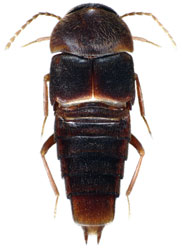
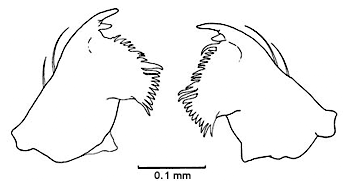
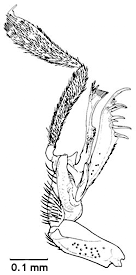
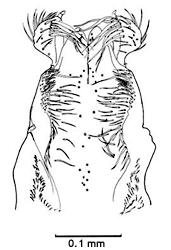
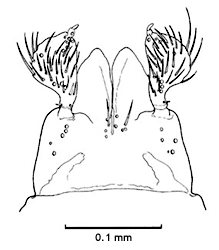
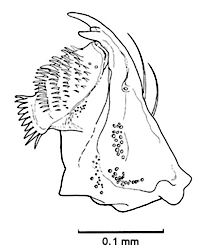
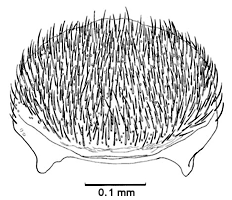
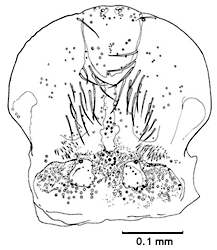


 Go to quick links
Go to quick search
Go to navigation for this section of the ToL site
Go to detailed links for the ToL site
Go to quick links
Go to quick search
Go to navigation for this section of the ToL site
Go to detailed links for the ToL site